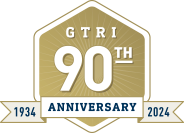Today’s world runs on information. At GTRI, we harness the power of knowledge elicited from information to the strategic benefit of national security interests.
Through research in information and data science, we solve problems by studying the properties and behavior of information for optimal accessibility and usability. We develop data-driven and actionable insights for a broad range of application domains through our expertise in distributed heterogenous computing architectures, while being mindful of ethics and privacy concerns.
We provide our sponsors with decision superiority through thought leadership specifically in the areas of operational analysis, mission effectiveness, survivability analysis, and world-class expertise in defining applied model-based systems engineering. Through this work, we enable decision-making at the highest levels of national security leadership through digital wargaming, road-mapping, and strategic planning.
We enable real-world applications of these concepts through command, control, and communication that enable exercise of command authority over assigned forces to accomplish mission objectives. Our work in advanced communication systems, integrated fire control, and related research empowers our nation to advance our capabilities for distributed battle management in all-domain, contested and congested environments through joint all-domain command and control.
Underlying this all, we understand that while harnessing information, we must keep it safe. Our world-class research in cybersecurity applies advanced technologies, processes, and controls to protect information systems, networks, devices, and data from attacks and threats across the planet. Through research into trusted microelectronics, cyberspace threats, assessments of critical infrastructure, secure communications and other areas, we help protect the nation’s most important information infrastructure.
Below are details and project examples for Application Areas 4 through 7. For more information on the overall Project Portfolio, please visit the homepage.


